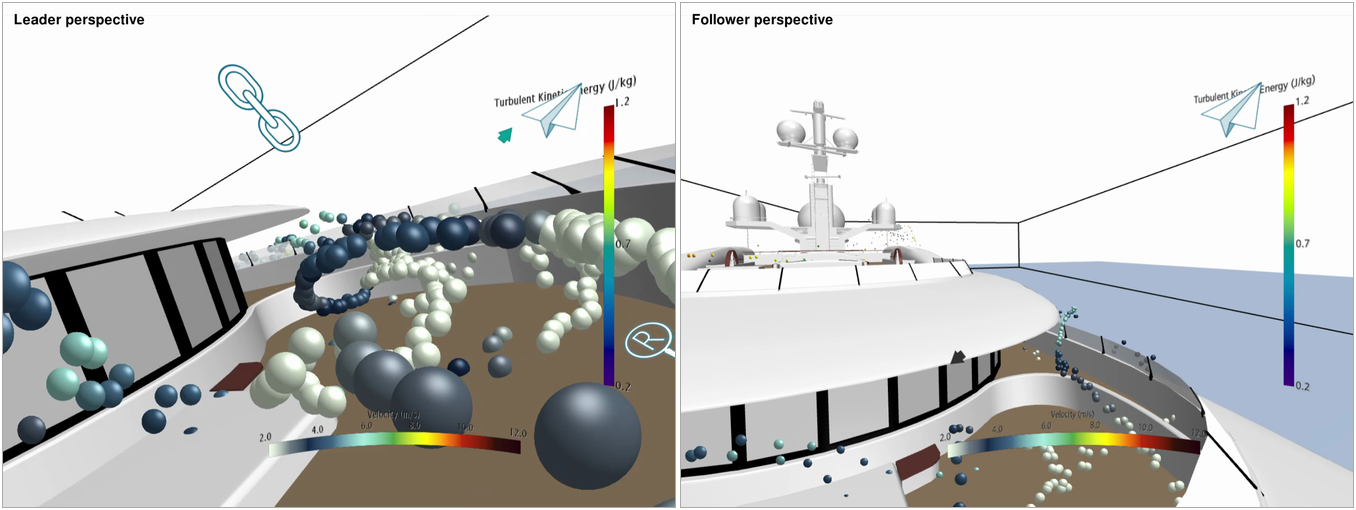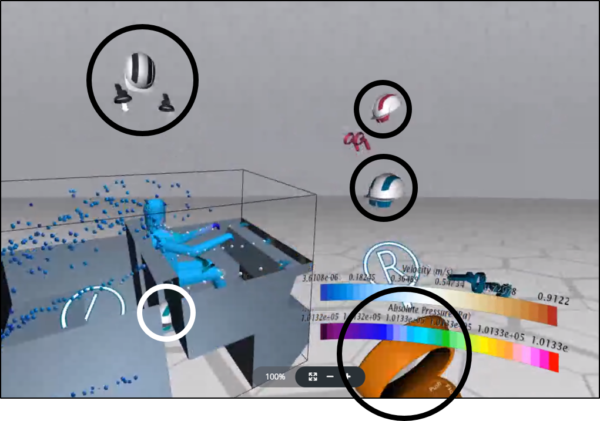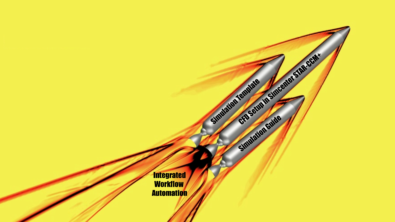Simcenter STAR-CCM+ Collaborative Virtual Reality – Let’s get acquainted!

You imported a CAD model. You built a mesh. You chose physics models and specified boundary conditions. The simulation ran quickly. You analyzed results, building evidence, drawing from your experience, creativity and imagination. You repeated some steps more than once. This process creates your personal “knowledge by acquaintance.” And you started to develop beliefs about the simulation of your digital twin that will fix your narrative. All along, you’ve been thinking about how to tell this story, how to share what you’ve learned. In this age of alternate facts, Jean Sean Doyle notes how important it is to acknowledge that the stories we tell ourselves matter [1]. When collaborating on a Multiphysics simulation effort, we may need to ask ourselves: “Is it the truth, or merely a description?” [2]
“Knowledge by acquaintance is… where [someone] has direct, unmediated, and non-inferential access to what is known.” [3] From the same source, “Knowledge by description… is indirect, mediated, and inferential.” Not to get too philosophical, but if I really want to understand something, being able to experience it first-hand is preferable to having it explained. Still, we’ve got limited time to become “acquainted” with the efforts of others. Collaborative Virtual Reality is an essential enabler – it’s like having a tour guide, someone knowledgeable, who can deliver the insider view. You get the benefit of first-hand experience without the burden of learning it on your own.
Time to explore!
Let’s look at a specific example – we want to understand passenger comfort on a luxury yacht by running a simulation on the air flow along the various deck levels. If you are an infrequent or less experienced VR user, Simcenter STAR-CCM+ Virtual Reality lets you find and comfortably tether yourself to someone with more experience. In this animation, showing leader and follower headset views, we take the guided tour from bow to stern, helping us to quickly get our bearings.
Below, our experienced tour guide is setting up vorticity iso-surfaces, highlighting areas of likely recirculating flows. It takes some practice to do this quickly and watching an expert do it saves time. And, we get a backstage pass with pointers to things that we didn’t even know to look for. Watch as our follower starts to move farther away from the guide, yet still staying tethered, gaining confidence while enjoying a sense of security and companionship.
Here, we see our tour guide hard at work, interactively creating plane cuts, to show the air flow speed at various locations. With Simcenter STAR-CCM+ Virtual Reality, anyone can create their own plane cuts. Or iso-surfaces. Or flow particle emitters. Or clipping planes. Having the ability to freely add layer upon layer of information saves time, speeding up our collective comprehension. Our follower is really starting to explore, playing out the distance on the tether, looking in all directions. Talk about getting acquainted! We’re on a first name basis now.
Can we change our narrative?
I started thinking about whether it was good to be able to change our well-considered narratives. Not only should we change and challenge, it’s imperative. A collective narrative is essential to establish and mature a culture of collaboration. Changing the narrative effectively means doing it collectively, before individual beliefs start to get fixed. In the preceding videos, we were looking at results after the simulation run was completed. Imagine that just after you’ve brought in your CAD model, you can gather your colleagues from around the globe, quickly confirming that you have the right assemblies and parts, before someone starts building the mesh. Imagine that after you’ve got your first meshing pass complete, multiple collaborators can spread out to check the mesh quality everywhere at the same time. If someone finds a spot where further attention is needed, you teleport to their location to see what they’re seeing. Side note – in Simcenter STAR-CCM+ 2020.1, you will be able to create high quality, polyhedral meshes faster than ever before… which means you and your collaborators can build, refine and review your mesh in significantly less time. You can also wave at each other! It’s fun and it overcomes one of the drawbacks of immersive environments – when you’re by yourself, it can feel very isolating.
At every step on the way to building your digital twin, you can use collaborative virtual reality to review and refine your narrative, as a team. Speaking of team, here’s a tip of the hat to our Developers and QA colleagues who worked on this feature – in this snapshot, there are people sitting all across North America and Europe, sharing this collaborative immersive experience, enjoying real-time interaction.

There’s more to this story
We’ve expanded our hardware coverage, providing support for Windows Mixed Reality and Oculus Rift headsets. While we cannot practically test on all commercial hardware, we can share what we have certified and what is known to work – please contact us for more information. One subtle point about our handheld controllers is that they are purposely designed for dominant handedness… new left and right labels are shown for each controller and they can be configured for either lefties or righties. One long standing request is to be able to preserve/recover the view when a scene file is loaded – this will save you time by not having to manipulate your content to a starting view. Lastly, we’re providing feedback during loading to show progress, particularly for collaborative virtual reality, to identify when we are connecting vs downloading vs updating.
Simcenter STAR-CCM+ Virtual Reality was first released just two years ago. Collaborative virtual reality is a major step forward for us. Let me express our thanks to the growing Simcenter STAR-CCM+ Virtual Reality community for your support and enhancement suggestions.
[1] Doyle, J.S., Changing the Narrative (Part 1), retrieved from https://www.psychologytoday.com/us/blog/luminous-things/201801/changing-the-narrative-part-1
[2] David Byrne’s American Utopia. By David Byrne, 25 Jan 2020. Hudson Theatre, New York NY. Live Performance.
[3] DePoe, J.M., “Knowledge by Acquaintance and Knowledge by Description”, Internet Encyclopedia of Philosophy, retrieved from https://www.iep.utm.edu/knowacq/



Comments
Comments are closed.